The Effect of Berberine on Metabolic Profiles in Type 2 Diabetic Patients: A Systematic Review and Meta-Analysis of Randomized Controlled Trials
- PMID: 34956436
- PMCID: PMC8696197
- DOI: 10.1155/2021/2074610
The Effect of Berberine on Metabolic Profiles in Type 2 Diabetic Patients: A Systematic Review and Meta-Analysis of Randomized Controlled Trials
Abstract
Objective: Rhizoma Coptidis is an herb that has been frequently used in many traditional formulas for the treatment of diabetic mellitus (DM) over thousands of years. Berberine, the main active component of Rhizoma Coptidis, has been demonstrated to have the potential effect of hypoglycemia. To determine the potential advantages of berberine for diabetic care, we conducted this systematic review and meta-analysis to examine the efficacy and safety of berberine in the treatment of patients with type 2 DM.
Methods: Eight databases including PubMed, Embase, Web of Science, the Cochrane library, China National Knowledge Infrastructure (CNKI), Chinese Biomedical Database (SinoMed), Wanfang Database, and Chinese VIP Information was searched for randomized controlled trials (RCTs) reporting clinical data regarding the use of berberine for the treatment of DM. Publication qualities were also considered to augment the credibility of the evidence. Glycemic metabolisms were the main factors studied, including glycosylated hemoglobin (HbA1c), fasting plasm glucose (FPG), and 2-hour postprandial blood glucose (2hPG). Insulin resistance was estimated by fasting blood insulin (FINS), homeostasis model assessment-insulin resistance (HOMA-IR), and body mass index (BMI). Lipid profiles were also assessed, including triglyceride (TG), total cholesterol (TC), low-density lipoprotein (LDL), and high-density lipoprotein (HDL), along with inflammation factors such as C-reactive protein (CRP), interleukin-6 (IL-6), and tumor necrosis factor-α (TNF-α). Serum creatinine (Scr), blood urea nitrogen (BUN), and adverse events were applied to evaluate the safety of berberine.
Results: Forty-six trials were assessed. Analysis of berberine applied alone or with standard diabetic therapies versus the control group revealed significant reductions in HbA1c (MD = -0.73; 95% CI (-0.97, -0.51)), FPG (MD = -0.86, 95% CI (-1.10, -0.62)), and 2hPG (MD = -1.26, 95% CI (-1.64, -0.89)). Improved insulin resistance was assessed by lowering FINS (MD = -2.05, 95% CI (-2.62, -1.48)), HOMA-IR (MD = -0.71, 95% CI (-1.03, -0.39)), and BMI (MD = -1.07, 95% CI (-1.76, -0.37)). Lipid metabolisms were also ameliorated via the reduction of TG (MD = -0.5, 95% CI (-0.61, -0.39)), TC (MD = 0.64, 95% CI (-0.78, -0.49)), and LDL (MD = 0.86, 95% CI (-1.06, -0.65)) and the upregulation of HDL (MD = 0.17, 95% CI (0.09, 0.25)). Additionally, berberine improved the inflammation factor.
Conclusion: There is strong evidence supporting the clinical efficacy and safety of berberine in the treatment of DM, especially as an adjunctive therapy. In the future, this may be used to guide targeted clinical use of berberine and the development of medications seeking to treat patients with T2DM and dyslipidemia.
Copyright © 2021 Jing Guo et al.
Conflict of interest statement
The authors declare that they do not have any potential conflict of interest.
Figures
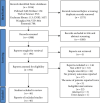


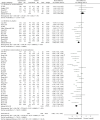
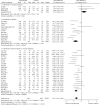

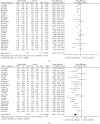
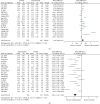

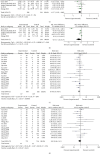
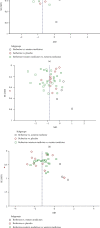
References
-
- International Diabetes Federation. IDF Diabetes Atlas . 9th. Brussels:
-
- Clark N. G., Fox K. M., Grandy S. Symptoms of diabetes and their association with the risk and presence of diabetes: findings from the study to help improve early evaluation and management of risk factors leading to diabetes (SHIELD) Diabetes Care . 2007;30(11):2868–2873. doi: 10.2337/dc07-0816. - DOI - PubMed
Publication types
MeSH terms
Substances
LinkOut - more resources
Full Text Sources
Medical
Research Materials
Miscellaneous

